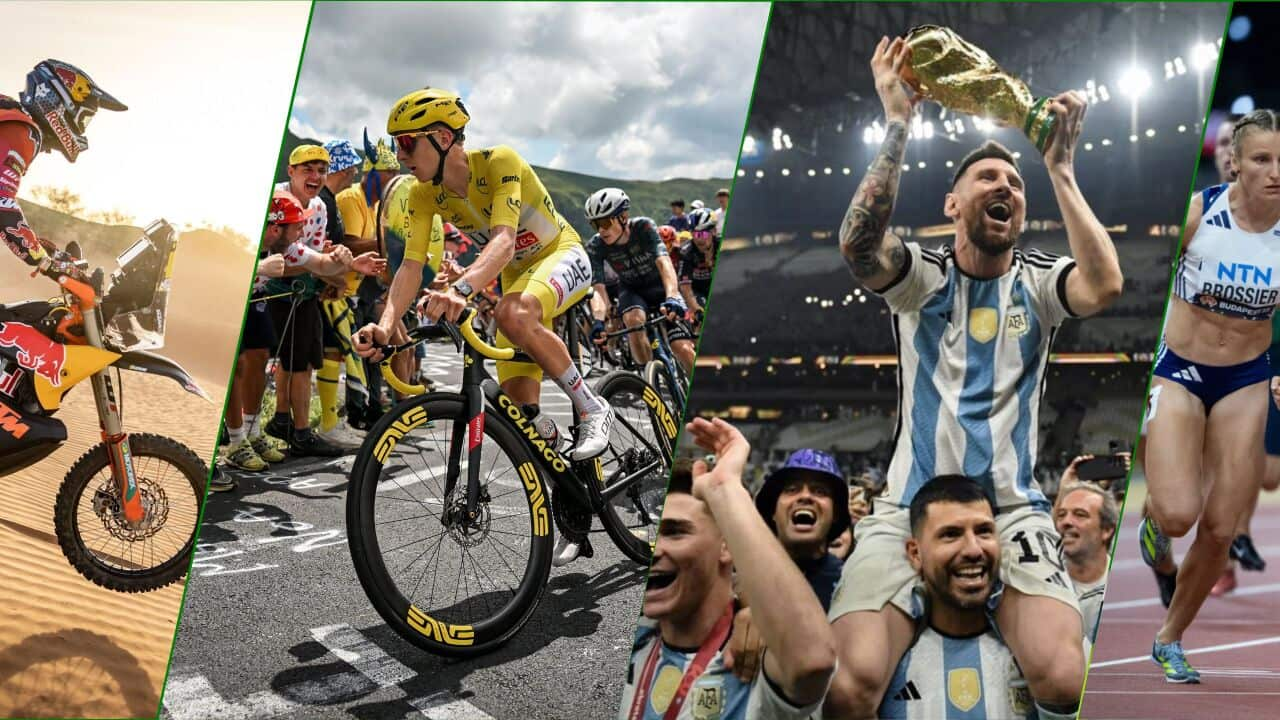Watch all the best , with the Tour de France, Tour de France Femmes and much more.
Past winners of the Giro d’Italia, Primož Roglič, Vincenzo Nibali and Australian Jai Hindley were in attendance along with luminaries of the sport in Filippo Ganna and three-time World Champion, Peter Sagan. The event doubled as the unveiling of the Giro d’Italia Women trophy with Elisa Longo Borghini and Letizia Paternoster also present.
The event has been officially renamed from the race variously known as the Giro Rosa, Giro d'Italia Feminile or Giro Donne.
The 2024 Giro d'Italia Women will move dates to July 7-14, again clashing with the men's Tour de France, while the Tour de France Femmes will move to August after the Paris Olympic Games, giving riders a bit more time to recover between the two events.
The Giro d'Italia Women will be reduced in length, running for eight stages, after nine days in 2023 and 10 days in most previous years.
Giro d’Italia Men 2024 route

The Turin and Piedmont region were confirmed as the site of the Grande Partenza, with the first three stages in the north-east of Italy before the route wends its way south.
It starts with two unusual stages already full of climbs that will force the favourites for the overall win to be already in good condition, although they are not such as to generate excessive gaps.
The third stage offers a potential bunch sprint (Novara-Fossano 165 km), but the sprinters will have to earn it since the precedent of an edition of one-day race, Gran Piemonte in 2009 shows how a single attacker, that time Philippe Gilbert, can overturn the odds and arrive alone.
The Giro moves on to Liguria (Acqui Terme-Andora 187km) and then Tuscany (Genoa-Lucca 177km) before a series of demanding and in some cases potentially decisive stages. There is one hilly stage, an individual time trial and a mountain stage with an uphill finish.
In chronological order: Viareggio-Rapolano Terme (177 km) with about 12 km of gravel roads in the finale, in part already seen at the Strade Bianche. This is followed by Foligno-Perugia, an individual time trial (37.2 km) with the last 4 km uphill to reach the historic centre.
After that, the second uphill finish on the 14 km to Prati di Tivo (Spoleto-Prati di Tivo 153 km), already the site of stages at the Tirreno-Adriatico on several occasions. From Spoleto, the riders cross the Umbrian Apennines to arrive at the Gran Sasso massif. Before the rest day, the caravan arrives in Naples (Avezzano-Napoli 206 km), in Via Caracciolo, with a potential sprint stage.
After the rest day, the peloton sets off again from Pompeii for a stage that features an unprecedented uphill finish (Pompei-Cusano Mutri [Bocca della Selva] 141 km).
Francavilla al Mare will host a well-deserved sprint (Foiano di Val Fortore-Francavilla al Mare 203 km) before the ‘muri di Fano’ stage (Martinsicuro-Fano 183 km). A selective stage characterised by the ‘low walls’ of the Marche region, those with high but not extreme gradients, which should bring a selected bunch to compete for the stage victory.
Watch the full presentation on SBS On Demand

Giro d'Italia 2024 route presentation
There will be another sprint in the Riccione-Cento (179 km), which passes through the areas devastated by the flood of May 2023. Weekend with two very demanding stages: Castiglione delle Stiviere-Desenzano del Garda: individual time trial (31.0 km) and Manerba del Garda-Livigno (Mottolino) of 223 km with an unprecedented uphill finish.
The time trial is the last chance for the specialists to build up an advantage over the climbers but, by the following day, the climbers will have the chance to turn the tables. In order to reach Livigno, 5200 m of vertical elevation will be overcome, with the interminable Forcola di Livigno in the finale (entering Switzerland) and the arrival at Mottolino, where the last 1800 m run on asphalt up to a ski station with alternating 18% ramps and short, almost flat sections.
Rest day and departure from Livigno for the Cima Coppi stage, which in 2024 will once again be the Stelvio Pass with its 2758 m featuring as the Cima Coppi for the 11th time in the race’s history. At 2758 metres, it is the highest altitude ever reached by the Giro d’Italia. The Livigno-Santa Cristina Valgardena (Monte Pana) offers 4400 m of vertical elevation culminating with the final 2 km of Monte Pana always above 10%.
The next stage from Selva di Val Gardena to Passo Brocon is 159 km long and is one of the decisive stages of the last week. With the exception of the short stretch from Canazei to Predazzo, there are only climbs and descents. The riders will climb the Passo Sella and the Passo Rolle, which made the history of the Giro in the early post-war period, to pass the Brocon Pass from two sides. Canal San Bovo, which has already seen the Giro of 1955-56-57 and 67 pass, and the new climb for the Giro d’Italia of Val Malene with the long stretch over 10% that leads to the finish.
The sprint to Padua (Fiera di Primiero-Padova 166 km) and the medium-difficulty stage to Sappada (154 km from Mortegliano) anticipates the showdown at Alpago-Bassano del Grappa (175 km with two climbs of Monte Grappa from Semonzo that saw the victorious attack by Nibali in 2010 and the time trial won by Quintana in 2014). The Grande Arrivo will be in Rome with a circuit in the Eternal City.
Watch the 2024 Giro d'Italia Men live and free on SBS!










